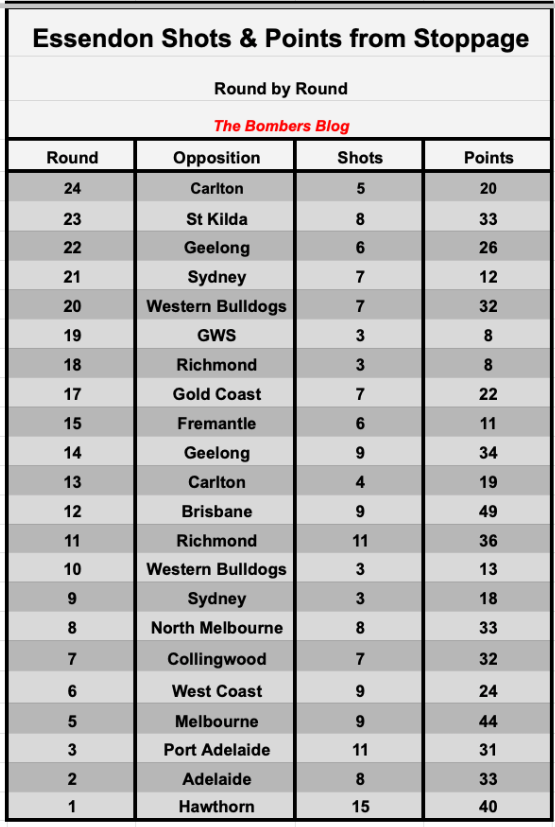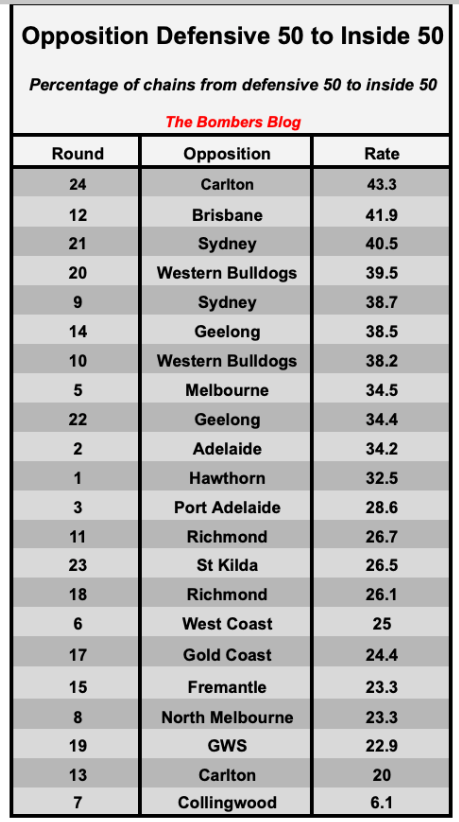
Bombers vs Blues Review
- thebombersblog

- Aug 23
- 6 min read
Not my sport.
I’m not a basketball fan, to tell you the truth. That’s not to denigrate the sport, because I can absolutely appreciate the skill level required, the athleticism of the players and the tactical battles that need to be executed, but it’s never been something that’s drawn me in as either a viewer or participant. So with that in mind, you’ll immediately know my thoughts on this game of football.
Jump ball.
This was the biggest concern coming into the game.
Essendon’s troubles began this year with ruck depth being hit by injury, which soon extended to the key defenders, and in recent weeks the midfield mix has been most hampered.
Carlton has also had their own injury issues, but their first-choice midfielders were all available,
leaving Essendon with a 37-year-old ruckman, a captain returning from surgery with a plate in his hand, a failed midfielder repurposed as a small defender, and a first-year 18-year-old taking the bulk of on-ball duties. Try as they might through setup, Essendon had no reliable answer around the ground, and even less in the centre square.

By half time, the Blues had won nine of 11 centre bounces, with all of those exits going inside their forward 50, including a first-quarter goal sourced directly from here.
In the previous two matchups between the teams, Carlton’s Tom De Koning had his way with Todd Goldstein, collecting the maximum 20 coaches votes, with last year’s performance his second-highest rated game of his career and this year’s his seventh-highest, but this time it wasn’t his dominance that paved the way; it was what happened post the ruck contests.
While Patrick Cripps came into the game as the 7th-ranked player in winning pre-clearance contested possessions (among players to have played five or more games), it was actually his teammate George Hewett, only ranked two spots lower than the dual Brownlow Medallist, who took complete control at the coalface when the game was up for grabs early.
By the main change, Hewett had eight of the Blues’ 22 clearances just on his own, as he was able to take the ball from congestion inside and into space on the outside. Just over 85% of his first possessions at stoppages turned into an effective clearance, an average only bettered by Marcus Bontempelli’s 87% and Matt Rowell’s 86% over the course of the season among players who have averaged six or more first possessions a game.
Leading into this week, the Bombers came in ranked as the 3rd-best team at denying the opposition’s first possessions at stoppage from turning into a clearance, with only the Cats and Bulldogs more successful in this aspect of the game.

But this week saw the Bombers without their number one player in this metric in Sam Durham, and it told in the end, only stripping possession off the Blues 20% of the time, their 5th-lowest rate of the season and more than 7% less than their season average.
The other way was a different story though.
While Essendon was ranked third in this metric, Carlton sat 11th, restricting opponents just over 24% of the time. Against a patchwork Essendon lineup, however, they were able to strip the ball almost 37%. The best example came in the third quarter, when Francis Evans kicked a goal with just over two minutes remaining after Cripps denied Isaac Kako a first possession leaving the area, and Hewett collected the loose ball that led to the score.
Coming in, Essendon had a −48 differential in total clearances since King’s Birthday Eve, while Carlton was +37 against their opponents over the same period, with 30 of those coming just in the centre square across their previous four games. It wasn’t surprising to see them take control in this important part of the game. The only saving grace for Essendon was their ability to prevent those stoppage losses from translating directly into scores.
Both teams here are the highest ranked of non-finals contenders in being able to defend a stoppage loss from ending in a scoring shot, with the Blues 5th and, extremely surprisingly, the Bombers 6th, only allowing 23.2% to go on the scoreboard, with the top four teams in this category currently inside the top five on the ladder.
On Thursday night, Carlton was kept to just over 18%, scoring only 32 points in total from clearances, with most of the damage done in the first and fourth quarters, with five of their seven shots coming in those 40 minutes.
For Essendon, this hasn’t been a reliable score source, especially since scoring 49 points against Brisbane in Round 12, averaging only six shots at goal for 20.5 points. Here, they only scored 20 points from five shots.

Transition offence.
This was the “basketball” part of the game that was the most frustrating to watch.
Despite the scoreboard being reasonably under control from clearances, the real damage came from the loss of initial field position, with long periods of the game played in the wrong half for Essendon, meaning their priorities weren’t just defending the last line, but also winning the ball back and moving it to regain lost territory.
For the majority of the time, they were successful in this challenge, which was the most pleasing aspect of the night, it’s just they could only do so much with what was coming their way from further up the ground, and a big reason why their holidays continue to start from September and not October.
The Bombers were forced to start 28 possession chains from defensive 50 in the first half, and by game’s end, 45, their third biggest total this year behind the 53 against Sydney three games ago and the 49 against Brisbane in Round 12.
Of those 45 chains, 11 went inside forward 50, Essendon’s fifth-highest return in a game this season, and if maintained over the year, would rank fifth in the competition behind only Geelong, Western Bulldogs, Brisbane and Sydney. From those same chains, one in every eight ended in a scoring shot, Essendon’s best rate for the year, with only Geelong averaging better across the season.

But relying on scoring chains that start so far from goal isn’t sustainable.
The AFL average this season is 84 points per game, with just under 39% coming from behind centre. On Thursday, over 71% of the Bombers’ score came from here, a positive in one sense (though it’s also why Carlton’s season has ended early), but in another, a telling reminder of an issue that has lingered too long: when those forward 50 entries don’t finish in maximum points, the ball too often travels the length of the field the other way.

Transition defence.
In last week’s review against St Kilda, I raved about Essendon’s front-half game, particularly in the first quarter, as the defensive wall was impenetrable, winning the ball back 14 times in this area, with 67% of the first 20 minutes spent in the forward half. That control not only shut down ball movement but also set up intercept scoring opportunities, with three of their five scores from Saints turnovers coming from the attacking half.
By contrast, this week the Bombers managed only 11 intercepts in the same area for the entire game, undeniably a poor return, with the punishment deserved.
While Essendon was able to transition at almost 25% from the back third to the front third, Carlton went at over 43% (their second-best rate this year, with only their match against West Coast more efficient) and the highest Essendon has conceded. The Blues were virtually untouched through the middle of the ground, meaning it was once again up to the defenders to go through the same processes they had to execute from stoppage losses.

After the buzzer.
After this week, most Essendon fans are just counting down until the season is over. Frustration has only grown in the second half of the year, and after some encouraging signs last week and the build-up to a future club legend’s 250th game, this week’s result is another reminder of what 2025 has become.
This year was meant to be exploratory, testing the list’s capabilities and seeing how it could handle an expected on-field system change, but injuries have made that difficult, weakening the connection between the players available and what the system could realistically achieve.
Hopefully, in the future we can look back on 2025 as the year the rebuilding process was sped up, a year that helped the club make faster progress towards the ultimate goal.






Comments